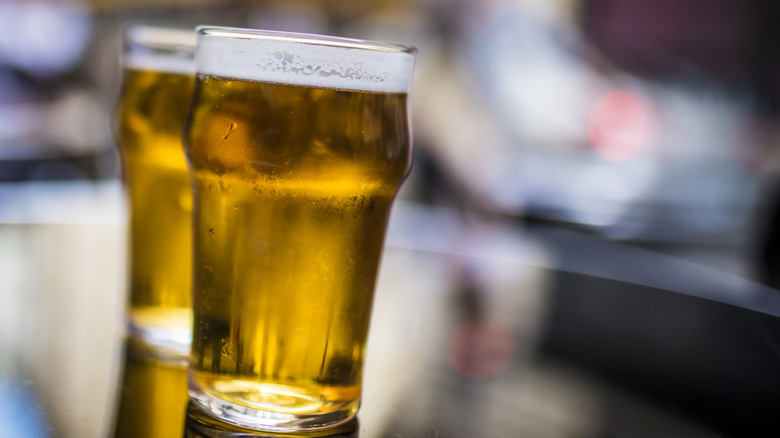How Exactly Is Non-Alcoholic Beer Made?
The advances in non-alcoholic beer over the past few decades can't be overstated; we're long past the days when your options were O'Douls and, well, O'Douls. Now, you've got all sorts of non-alcoholic beer options, running the gamut from pilsners and IPAs to porters and stouts. But how is non-alcoholic beer even made in the first place, and what even is it?
As it turns out, the answer is that there isn't just one answer to that question; there are two. Non-alcoholic beer (which can legally have up to 0.5% ABV and is thus different from alcohol-free beer, which has 0.0% ABV) can be made without alcohol or with alcohol that is then removed. Each has its strengths and weaknesses, but funny enough, it's typically making the beer without alcohol that results in that 0.5% ABV, while dealcoholizing the beer is more likely to create a beer that's genuinely alcohol-free.
Brewing beer without alcohol involves careful manipulation of sugars
It helps to understand how beer is made in the first place. First, whatever grain is used for the beer (barley, wheat, rice, etc.) is ground up and mixed with hot water, then allowed to steep until it forms a thick sludge called mash. Meanwhile, the excess liquid is strained out and boiled while various types of hops are added to create the desired flavor profile. From there, the fluid is cooled and put into a fermentation chamber to which yeast (aka the thing that makes the magic happen) is added. The yeast's job is to convert the sugars in the nascent mixture into alcohol. The beer is then aged (how long depends on the type) — but that yeast phase is the key for our purposes because that's where the beer becomes alcoholic.
One option is making beer without alcohol to begin with. This process is the cheaper of the two ways to get non-alcoholic beer because it doesn't require cost-prohibitive equipment. It does, however, require time and careful effort during the mashing process to make sure the sugars created don't include maltose (the primary sugar that produces alcohol during fermentation). But this part of the process still involves the creation of other sugars, which do ferment into alcohol — just much smaller amounts of it. This is how you get non-alcoholic beer that still isn't fully alcohol-free.
There are two main ways to remove alcohol from beer
By contrast, dealcoholization is more likely to yield beer without any alcohol. There are two main methods here; both aren't cheap because they require special equipment. The one that's been around longer is vacuum distillation, in which the beer is heated in a vacuum until the ethanol evaporates (essentially the same process as distilling liquors like vodka).
The second method is reverse osmosis. This one is a little more complicated but basically makes use of pressure to push the beer through a fine membrane, separating water and alcohol out of the beer and leaving behind just the beer flavor (resulting in non-alcoholic beers that taste more like, well, beer). Water gets added back to the mixture afterward, leaving this as the most effective way to get an alcohol-free beer. The only problem is cost; this method requires expensive equipment.
All of these methods work to create non-alcoholic beer. It's just a matter of which the brewer prefers — and which the customer most enjoys.


